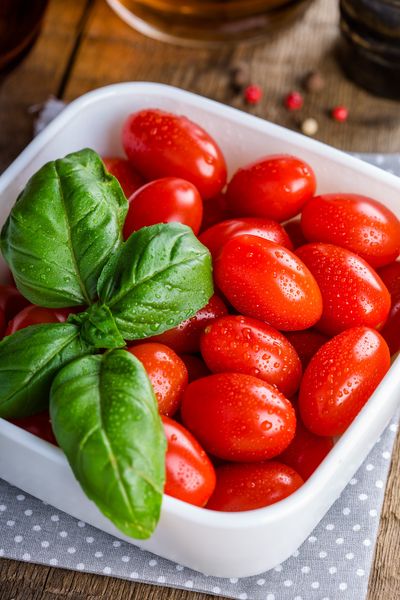Water Cooler: Passata is the key to easy, homemade tomato sauce

If you’ve ever aspired to make homemade tomato sauce, you’ve likely hesitated because of the assumption that it will take a whole day of laboring over a simmering pot to complete. Tomato passata is the Italian secret that will defy your expectations.
It’s of course not really a secret, just a nuance of Italian cooking that is not as well known or well defined in the United States. Tomato passata is simply a fresh tomato puree. It is usually made in late summer at the height of tomato harvest. This makes it the perfect pantry staple for gardeners especially, as its purpose is to preserve the fresh, bright flavor of summer tomato harvests for year-round use.
Tomato puree can be bought in just about any American supermarket, but its term is used loosely. Many canned purees are cooked while some may be fresh like passata. Fresh tomatoes lend a more intense flavor and more acidity than the sweeter and more mellow flavor of cooked tomato.
The reward of making tomato passata is that it gives you the versatility of using it as a simple, raw tomato sauce on something like pizza or instead using it as the first steps of a cooked sauce with additional seasonings and other ingredients. The following recipe will make a few jars of passata.
Passata
10 pounds of tomatoes
One red or green bell pepper (optional)
A small bundle of fresh basil
2 tablespoons salt
Extra virgin olive oil
Tomatoes that are homegrown or purchased from a local farmer’s market will yield the best flavor. Use Roma or the less common San Marzano tomatoes. Sanitize three or four glass jars (with lids), and thoroughly wash the tomatoes in water.
Get the equipment ready. You’ll need a knife, a large pot, two large mixing bowls, a fine mesh sieve, and a food mill, food processor, blender or ricing device.
After the tomatoes are rinsed, cut any green parts, blackened areas, stem remnants or impurities out of the tomato. A paring knife is best for this job. Cut each tomato in half or quarters and toss into the large pot.
If you want extra sweetness and robustness of a bell pepper, remove the stem and cut half of it into inch-thick slices. Add to the pot.
Pour in a bit of water, just enough to coat the bottom of the pan with about 1 inch of water. This will prevent the tomato skins from sticking to the pot and burning.
Put the pot over medium heat and cover. Let them boil for about 20 minutes, until completely collapsed. Stir every five minutes. This extracts the water from the tomatoes so only the pulp and juice are left when straining.
Once broken down, strain the tomatoes through a fine mesh sieve. Use a wooden spoon to squeeze as much water out as possible. Discard the water into the sink. You may need to do this in several batches.
Grind the pulp in a food mill. This tool is best because it separates the skin from the pulp. If you don’t have one, use a processor or blender instead. The only difference is you will need to strain the ground mixture through a fine mesh sieve to remove the seeds and skin.
You can choose to salt the puree at this point, or leave it unseasoned. Also optional, you can put a few basil leaves in each sanitized jar. Stir the puree and use a ladle and funnel to fill each jar, leaving space at the top for canning. Top with a one-quarter inch thick layer of olive oil, then screw the lid on tightly.
Boil the jars for 20 minutes to seal the lids if desired.
Rachel Baker can be reached at (509) 459-5583 or rachelb@spokesman.com.